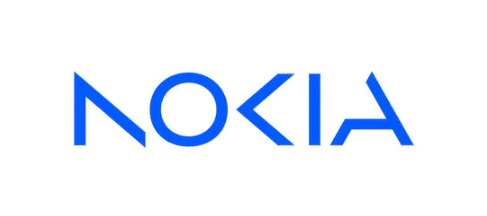Nowadays, keeping up with changing market trends and consumer preferences is crucial to a company’s success. One way to stay relevant is through rebranding. It can help an organisation better reflect its values, goals, and offerings. However, some businesses fail to take advantage of the time-sensitive opportunity to rebrand, which has negative consequences. In this article, we will explore some examples of missed rebranding opportunities and examine their impacts.
Missed rebranding opportunities
The right moment for rebranding is easy to miss. Some brands are either overconfident or do not know their market well enough. As a result, they risk their position and developed image. As the failed rebranding examples below show, this attitude can lead companies straight to the brand graveyard. If you yourself are wandering whether it’s the right moment to refresh your brand, make sure to download our rebranding checklist.
Nokia
Nokia is the most principled case of a missed rebranding opportunity. The company overslept its chance during the rise of the smartphone market in the mid-2000s. At that time, it was the world’s largest mobile phone manufacturer. Customers widely used their devices and respected for durability and reliability. However, Nokia was already facing increasing competition from Apple’s iPhone and other smartphone makers.
In response, the company attempted to launch its smartphone platform, known as Symbian. Unfortunately, it struggled to gain traction among consumers. Nokia’s plans to fully embrace the smartphone trend and develop a competitive platform backfired and ultimately led to its slump in the mobile phone market.
Nokia did attempt to rebrand itself in the early 2010s with the launch of its Lumia smartphone line. The partnership with Microsoft and the decision to focus exclusively on Lumia’s Windows Phone operating system proved a strategic mistake as the market shifted towards iOS and Android devices. As a result, this rebranding announcment effort failed, and the company ultimately sold its mobile phone business to Microsoft in 2014.

Kodak
In the early 2000s, Kodak was facing a decrease in sales and profits due to the rise of digital photography. Despite having invented the digital camera in the 1970s, the company had failed to capitalise on the technology and was losing market share to competitors such as Canon and Sony.
Although Kodak undertook several rebranding efforts and changed branding tactics over the years, it missed a major opportunity to embrace the digital photography market. It was in the 1990s and early 2000s when the company was still a leader in the photography industry. Instead, it clung to its traditional film-based business model and was slow to adapt to the digital age. As a result, the rebranding process failed to resonate with customers, and the company continued to struggle financially. In 2012, Kodak filed for bankruptcy, unable to compete with digital photography giants.
Although Kodak still exists, the company is looking for new opportunities for development, including the production of pharmaceutical materials.

Yahoo
Yahoo was once a dominant player in the search engine market, but it failed to keep up with Google’s rise. Although the company refreshed its brand image by launching a new logo and brand identity in 2013, it didn’t address Yahoo’s core problems. Declining revenue and market share should have resulted in a significant shift in perception or performance. None of this has happened. Moreover, Yahoo’s reputation suffered by a series of high-profile security breaches that compromised the data of millions of users. The company was slow to respond to the crisis, further damaging its brand and eroding customer trust.
In 2016, Verizon purchased Yahoo for $4.8 billion, but the acquisition was marred by security breaches and the company’s declining reputation. The organisation was eventually merged with AOL to form a new brand, Oath, which itself was later rebranded as Verizon Media. In 2019, it was renamed to the original name: Yahoo!

MySpace
In the mid-2000s, MySpace was the major social networking platform, with millions of users and a reputation for being on the cutting edge of online trends. However, by the late 2000s, its popularity collapsed significantly as people began to migrate to newer media such as Facebook and Twitter. MySpace was slow to respond to the changing market, and its brand became associated with outdated technology and tumbling relevance.
In 2010, MySpace initiated a process of rebranding, which included a new logo, a redesigned website, and a renewed focus on music and entertainment. The new logo was intended to reflect a more modern and streamlined design, and the change of focus was intended to differentiate MySpace from other social networking sites. However, the belated rebranding attempt was unsuccessful in turning around MySpace’s declining fortunes. Users continued to abandon the site, and advertisers became increasingly reluctant to invest in the platform. In 2011, MySpace was sold to Specific Media for a fraction of its previous value, and it has since been repositioned as a music and entertainment site.

Sears
It’s maybe less globally known, but another prime example of an overslept rebranding. Sears was once one of the largest and most iconic retailers in the United States, with a reputation for quality and reliability. However, by the early 2000s, it began to lose market share to newer competitors such as Walmart and Amazon. Sears overslept several chances over the years, but significant missed rebranding opportunities were in the late 1990s and early 2000s. At that time, the company was struggling to compete with the rise of big-box retailers and was facing declining sales and profits.
Experts argue that Sears missed a key opportunity during this time to fully embrace e-commerce and digital technologies, which could have helped the company better compete with online retailers like Amazon. Instead, Sears continued to focus on its traditional brick-and-mortar stores and was slow to adopt digital innovations. What’s more, the company’s reputation was further damaged by a series of high-profile scandals, including allegations of fraud and mismanagement. They eroded customer trust and made it difficult for Sears to maintain market share and relevance. All of this led to the retailer’s withdrawal and bankruptcy in 2018.

Missed rebranding opportunities – summary
As you can see, sometimes timing is everything. In each case described above, the rebranding efforts came too little, too late, and failed to address the core problems that had led to the companies’ plummet. As a result, these businesses lost customer trust and relevance, making it impossible for them to recover.
Thankfully, you can avoid this scenario – if you have any questions we will be happy to address all of them Contact us, and let’s grow your brand!
Want to know, for a change, examples of rebranding that did happen but shouldn’t have? Here are 5 examples of unsuccessful rebranding.




